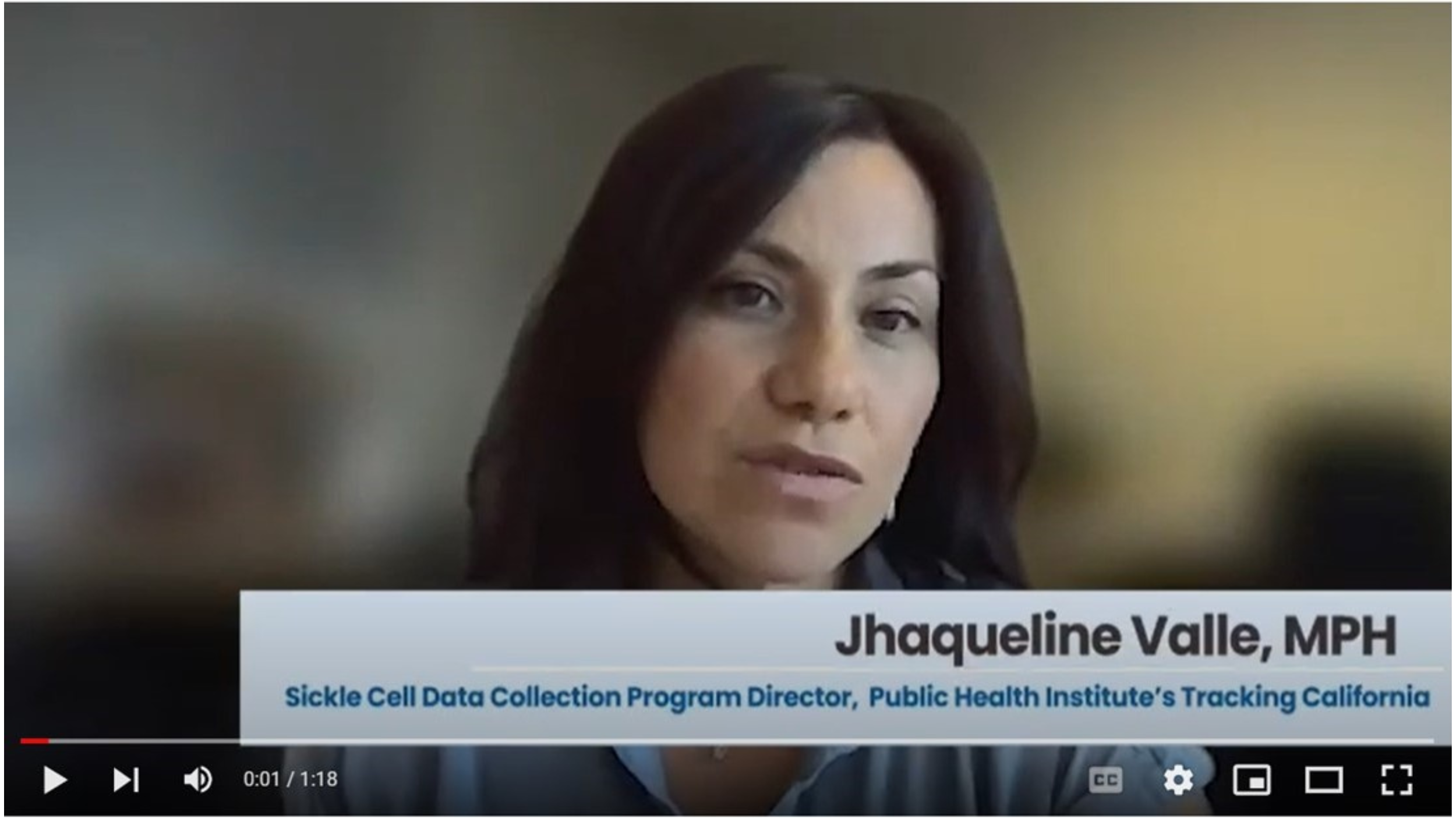
Press Release
New Study: Latinx Californians Make Up 7.3% of Sickle Cell Disease Cases, 11% Among Latinx Newborns
-
Focus Areas
Chronic Disease Prevention, Women, Youth & Children -
Expertise
Research – Quantitative -
Programs
Tracking California

A new study published by the Public Health Institute’s Tracking California program, Sickle Cell Disease Among Latinx in California, takes a closer look at the prevalence and characteristics of Sickle Cell Disease (SCD) within the Latinx population. Latinx newborns in the state made up 11% of Sickle Cell Disease cases.
Sickle Cell Disease is a hereditary blood disorder causing devastating complications for patients and their families. People with SCD can experience poor health outcomes, and those with severe cases can die more than 20 years before their peers. Many people with SCD struggle to access quality healthcare that can increase their chances of living healthier, longer lives. SCD overwhelmingly affects the Black community. Latinx are the second largest population affected by Sickle Cell Disease in the U.S; however research has largely ignored how this rare blood disorder impacts Latinx nationwide.
The study, published in the peer-reviewed journal PLOS ONE, was a collaborative effort between PHI’s Tracking California program, the Center for Inherited Blood Disorders, Charles R. Drew University of Medicine and Science, and Networking California for Sickle Cell Care (NCSCC).
READ THE FULL STUDY
Jhaqueline Valle, lead author on the study and Director of the California Sickle Cell Data Collection Program at PHI’s Tracking California speaks on the new study that shows the prevalence and characteristics of Sickle Cell Disease (SCD) within the Latinx population and how 7.3% of Latinx Californians make up Sickle Cell Disease cases and Latinx newborns made up 11% of Sickle Cell Disease cases. Note for media: Press can embed and edit the video footage with proper attribution to PHI, or contact us to access the original footage.
Research Findings
The study looked at demographics, genotypes, primary insurance, and health care utilization among Latinx and non-Latinx Californians living with Sickle Cell Disease using data from the California SCD Data Collection Program (2016-2018) and newborn screening cases 2000-2017.
Researchers found that:
- Out of 6,837 Sickle Cell Disease cases in California, 501 (7%) were Latinx.
- 11% of babies born with Sickle Cell Disease in California were Latinx.
- Nearly half of the Latinx population with Sickle Cell Disease were under 21 years of age.
- Latinx Californians were less likely to have the milder genotype of Sickle Cell Disease than non-Latinx Californians.
- Most of the Latinx population in California living with Sickle Cell Disease resided in Los Angeles County, Orange County and the Bay Area.
- Females represented a higher percentage of the Latinx population with Sickle Cell Disease than males.
- 70% of the Latinx population with Sickle Cell Disease relied on Medicaid as their source of health insurance.
The study found that both Latinx and Non-Latinx patients rely heavily on Medi-Cal health coverage, confirming how critical Medi-Cal policies are for populations with Sickle Cell Disease on a state-wide level.
Latinx make up the largest racial and/or ethnic group in California and the U.S., and the Latinx population continues to grow. Researchers from the study expect that the number of Latinx with Sickle Cell Disease will also grow.
“The study will go a long way to bringing awareness about the impact of SCD in the Latinx community and ensuring this population is considered when developing programs and outreach,” said Jhaqueline Valle, MPH, lead author on the study and Director of the California Sickle Cell Data Collection Program at PHI’s Tracking California.
Valle calls for continued support and care to all people living with SCD, who face daily obstacles to accessing even basic healthcare; an increase in community awareness and education, especially among the Latinx community and their providers about SCD, sickle cell trait, and how it is passed on; and more resources in Spanish for people living with this disease and those who care for them.
“California was sorely lacking in data collection relevant to the percentage of Latinx residents impacted by this inherited blood disorder. We now know that this community is actually the second highest population impacted in the state, ” says Juana Ferrerosa, PhD, MSN, PHN, RN, Director, Doctor of Nursing Practice Program and Assistant Professor, CDU School of Medicine and Science at the Mervyn M. Dymally School of Nursing. “Learning how to provide culturally competent and compassionate care is an ongoing process and we’re committed to listening to our patients needs and feedback in order to continually improve our care delivery.”
“As NCSCC continues its work to open Sickle Cell Disease clinics and provide medical staff with enhanced knowledge of the disease, it has always been a priority to better understand which populations will benefit from expanded outreach, education, and care,” said Judith R. Baker, DrPH, MHSA, Public Health Director for the Center for Inherited Blood Disorders.
Visit PHI’s Tracking California website for more information. Listed below are Spanish language resources on SCD.
Related Resources:
- CDC’s Sickle Cell Disease Spanish website: Learn about SCD and find resources in Spanish.
- Sickle Cell Trait Toolkit: Find a collection of fact sheets covering various health problems affecting people with sickle cell trait. English, Spanish, and French versions are available.
- Steps to Better Health Toolkit: Many of the materials in the toolkit (for common complications of SCD) are available in Spanish and French.
- Fact Sheets: Find SCD fact sheets available in Spanish and other languages such as English and French.
More Updates
Work With Us
You change the world. We do the rest. Explore fiscal sponsorship at PHI.
Support Us
Together, we can accelerate our response to public health’s most critical issues.
Find Employment
Begin your career at the Public Health Institute.



